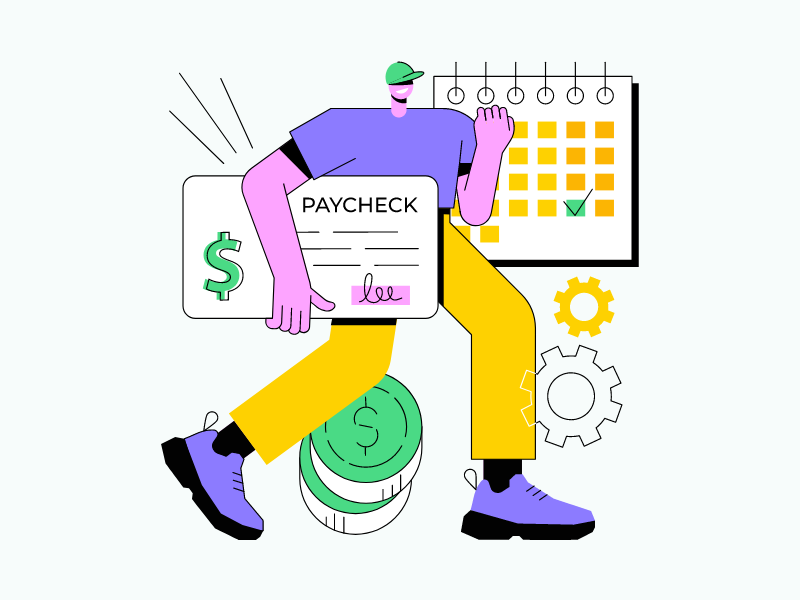How to Budget Your Paycheck (My Paycheck Routine)

Today I want to discuss with you my paycheck routine.
It is important to assign a job to every dollar you earn. This makes it easier to stay within your budget and allows you to hit your financial goals without any hiccups.
Which is why I will be sharing with you how I break up my paycheck to cover all my expenses and needs.
1. Employer Retirement Investing
The first step of my process is that I contribute to my employer’s 401K plan. My employer matches up to 2%, which is very mediocre.
Nonetheless, I recently increased my contribution to 20% to take advantage of the current stock market crash/bear market/recession. Whatever you like to call it, I do not want to miss out on the opportunity to buy when things are this cheap.
Basically, I’m investing $1,000 biweekly into my 401K account. This leaves me with a net paycheck of about $2600.
2. Fixed Spendings
I put all my fixed expenses on my credit cards so that I can either collect points or get some cash back. This includes my car payment, gas, food, and leisure activities.
I do not use my debit card unless I am withdrawing cash from an ATM. I only use cash in places that do not accept credit cards.
However, I pay off all my credit cards at the end of every month. I never carry a balance. So with every paycheck, I transfer $500-600 to pay off my credit cards.
3. Emergency Fund
Normally, I would transfer some money to build up my emergency fund. But I already built a $5,000 emergency fund, so I stopped contributing to this a long time ago.
But I recommend that you start working on your emergency fund if you haven’t already. This is essential to make sure you are covered if an unexpected expense or lifestyle change comes your way.
Thus, plan to save for 3-6 months of your fixed expenses in a separate savings account.
4. Tax-advantaged Retirement Account
My favorite retirement account is a Roth IRA. An IRA is an individual retirement account. A Roth IRA essentially allows you to invest for retirement but with the ability to withdraw money in retirement tax-free.
I usually contribute $500 of every paycheck to my Roth IRA. However, I just maxed out my Roth IRA ($6,000) at the beginning of September. So now I have an extra $500 to invest elsewhere, but more about that later.
5. Debt Payoff
Luckily, I do not have any debt. I paid off my car and finished my student loans a while back.
But if you do have debt, you want to allocate a portion of your paycheck to pay off any debt, especially anything with a higher interest rate than 8%.
If you have any debt that has an interest rate of upwards of 8–10%, I would consider finishing paying off the debt before moving on to the next step. But if your debt is lower than 7%, then you can pay off debt and start the next step simultaneously.
6. Taxable Investing Accounts
Now that I have contributed to my retirement accounts and paid off my expenses, I still have $1500 left per paycheck.
Here is where I funnel that money. First $500 to my M1 finance account where I’m investing in dividend stocks and ETFs. Then I transfer $1,000 to my Robinhood account where I’m dollar-cost averaging into Bitcoin and Ethereum every day.
7. Fun Fund
Remember how I maxed out my Roth IRA? So now I have $500 to spare since I no longer need to contribute to that account.
I can choose to either build my fun fund so that I can have some cash for travel or lavish purchases, or I can choose to divert that money back into my taxable investing accounts.
For now, I will be saving that $500 from every paycheck till the end of the year to either go on a vacation or buy a new phone/laptop. Regardless of what the money will be used for, it is always nice to have some cash to reward yourself.
Have a great week!
Muhamed

